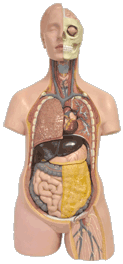At WiseGEEK, we're committed to delivering accurate, trustworthy information. Our expert-authored content is rigorously fact-checked and sourced from credible authorities. Discover how we uphold the highest standards in providing you with reliable knowledge.
What Is a Neural Plate?
The neural plate is the first stage of nervous system development in human embryology. It has been observed in bird and amphibian embryos as well, but first becomes visible on human embryos on day 19 of development. Ectoblast cells, which lie on the outer layer of an embryo, begin to turn into neural cells, and the neural plate first forms as a medio-sagittal thickening at the end of the primitive streak, where the embryo’s midline forms to promote symmetrical development of a fetus. The brain forms out of the wider cranial end, and the back, or caudal, end is where the spinal cord develops.
An embryo consists of an ectoderm from which neural and skin cells develop, a mesoderm that forms the muscles and skeleton, and an endoderm that develops into the digestive and respiratory system. A certain growth factor is needed to transform ectoderm cells into skin tissue, and at least 50% of the mass of the ectoblast turns into the neural plate. Axial mesoderm cells in the embryo secrete substances that induce the plate and the rod-shaped axis called the notochord to form.

Inhibiting signals for a specific growth factor allow parts of the ectoderm to form into neural cells. In places the signals do not reach, the cells outside the neural cells form into skin tissue. The neural plate lengthens and narrows as the embryo develops, and begins to fold in the third week of embryonic development. Neurulation at its first stage progresses as the neural tube develops out of the neural plate. The top of this enclosed tube is where the brain grows, while the spinal cord develops out of the trailing end.
Primary neurulation is the name of this entire process. The neural tube eventually closes off, and parts of the neural fold turn into neural crest cells, which end up situated between what was the neural plate and the epidermis. These cells form into parts of the peripheral nervous system.
The folding of the neural plate is a complex process because the entire fold does not close up everywhere at once. If a part of it does not close properly, conditions such as spinal bifida are the result. Folic acid and cholesterol are important to preventing such defects in human embryology. Supplements of vitamin B12 reduce the risk of defects related to the development of the neural plate.
AS FEATURED ON:
AS FEATURED ON:










Discuss this Article
Post your comments